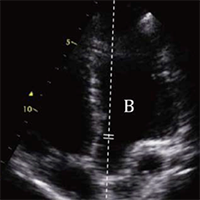Can Left ventricular outflow tract aortic velocity time integral guide fluid resuscitation in septic patients? - A case report

Submitted: 12 January 2020
Accepted: 6 June 2020
Published: 25 August 2020
Accepted: 6 June 2020
Abstract Views: 720
PDF: 468
Publisher's note
All claims expressed in this article are solely those of the authors and do not necessarily represent those of their affiliated organizations, or those of the publisher, the editors and the reviewers. Any product that may be evaluated in this article or claim that may be made by its manufacturer is not guaranteed or endorsed by the publisher.
All claims expressed in this article are solely those of the authors and do not necessarily represent those of their affiliated organizations, or those of the publisher, the editors and the reviewers. Any product that may be evaluated in this article or claim that may be made by its manufacturer is not guaranteed or endorsed by the publisher.

 https://doi.org/10.4081/ecj.2020.8817
https://doi.org/10.4081/ecj.2020.8817








